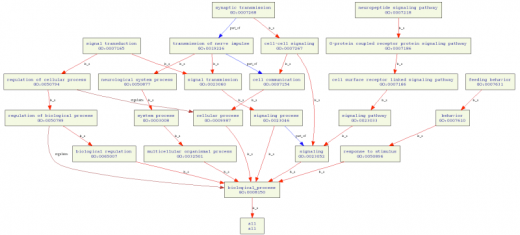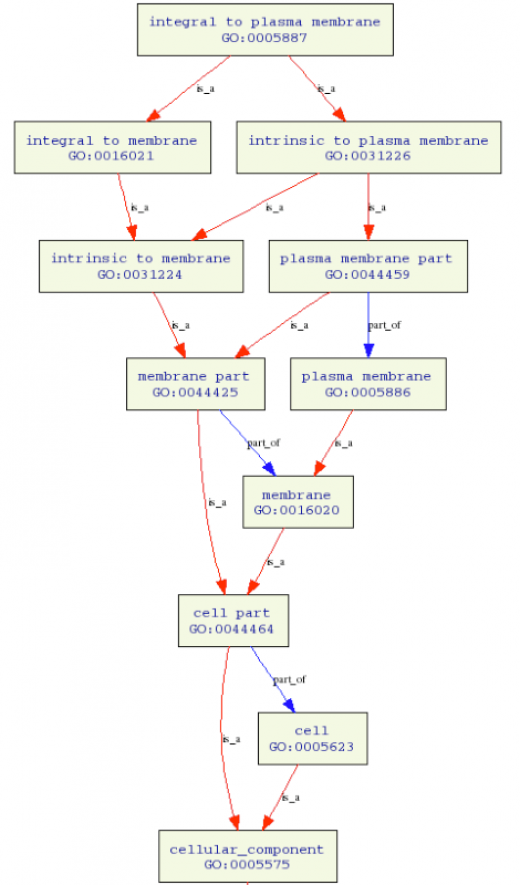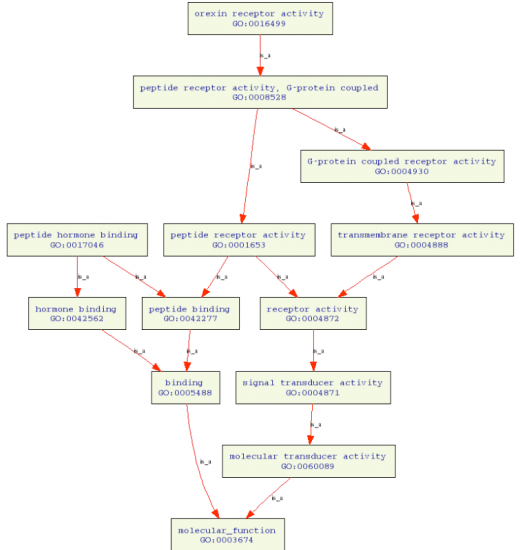This web page was produced as an assignment for Genetics 677, an undergraduate course at UW-Madison
Gene Ontology
In an effort to make a standard representation of every gene and gene product that all scientists have access to, the Gene Ontology project was created. This project provides a means for scientists to easily attribute characteristics to new genes they might discover by providing a standard list of vocabulary terms. It also allows them to compare genes across species according to function.
AmiGO
Using AmiGO, I conducted a general search for hypocretin receptor.
Type 1 hypocretin receptor binding
Accession: GO: 0031771
Ontology: molecular function
Definition: Interacting selectively and non-covalently with a type - 1 hypocretin receptor
After conducting the basic search for the hcrtr1 gene I received results 10 term association results from the AmiGO database website. These terms, called ontology terms, are any terms that are related to the gene and it's function. The website uses three different categories to separate the ontology terms: biological functions, cellular components, and molecular functions. Below are the visual depictions of the relations between the ontology terms. A left mouse click on each figure will show a full-size version of the figure.
Type 1 hypocretin receptor binding
Accession: GO: 0031771
Ontology: molecular function
Definition: Interacting selectively and non-covalently with a type - 1 hypocretin receptor
After conducting the basic search for the hcrtr1 gene I received results 10 term association results from the AmiGO database website. These terms, called ontology terms, are any terms that are related to the gene and it's function. The website uses three different categories to separate the ontology terms: biological functions, cellular components, and molecular functions. Below are the visual depictions of the relations between the ontology terms. A left mouse click on each figure will show a full-size version of the figure.
Biological Processes:
Feeding behavior, neuropeptide signaling pathway, signal transduction, synaptic transmission
Cellular components
Plasma membrane, integral to plasma membrane
Molecular function
G-protein coupled receptor activity, orexin activity, peptide hormone binding, receptor activity
Analysis of results
Given our knowledge from the home page, if we were to predict what functional terms would be associated with the hcrtr1 gene, it would probably include many functions that all receptor proteins share. Upon receiving results, this is exactly what happened: terms such as receptor activity, peptide hormone binding, synaptic transmission, plasma membrane and integral to the membrane all turned up. Hcrtr1 encodes the hypocretin-1 receptor protein and this particular receptor belongs to a large family known as the G-protein coupled receptors. Because of this, it is also unsurprising that the G-protein coupled receptor protein ontology term showed up. Finally, it makes sense that neuropeptide signaling pathway, orexin activity and signal transduction turned up as ontology terms, because specifically, the hypocretin-1 receptor acts as a receptor for the protein hypocretin (orexin) which is a neuropeptide. This protein is known to play a role in food intake, so feeding behavior came up as an associated term as well.
References:
Eric Suchy, Email: [email protected], last updated: May 15, 2010



